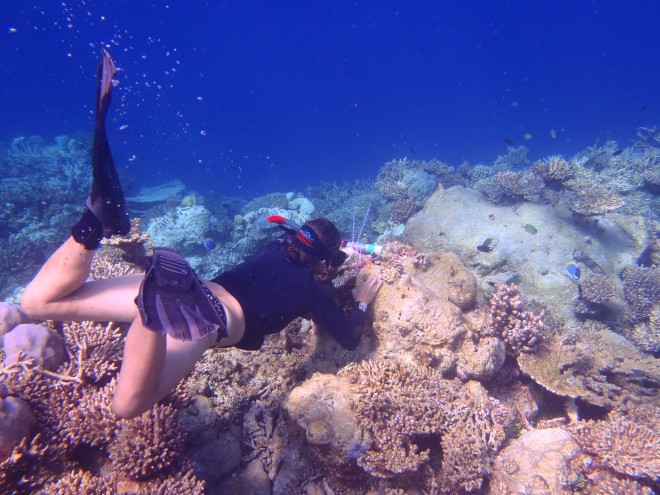
A group of international female geoscientists including NUI Galway, have taken a close look at their profession and discovered the barriers to success, while also pinpointing the sometimes simple changes that can be made to attract more women into innovative industries. The revealing results are published today (4 September) in Nature Publishing Group’s social sciences journal, Palgrave Communications.
The researchers are part of the committee for the international network working for Women in Coastal Geoscience and Engineering (WICGE), spanning Australia, New Zealand, Ireland, France, the United Kingdom, Mexico and Spain. They found that although women make up almost a third of the coastal geoscience and engineering community, they represent only about one in five of its prestige roles.
Coastal geoscience and engineering (CGE) encompasses professionals working on coastal processes, integrating expertise across physics, geomorphology, engineering, planning and management. This study presents novel results of gender inequality and experiences of gender bias in CGE, and proposes practical steps to address it.
The study entitled ‘Steps to improve gender diversity in coastal geoscience and engineering’ saw the international team of researchers analyse the gender representation in the boards and committees of nine societies, 25 journals, and 10 conferences. Additionally, the scientists launched a global survey and obtained responses from 314 people.
Co-author of the study, Dr Siddhi Joshi from the School of Geography and Archaeology at NUI Galway, said: “Robust data on gender diversity is often scarce and studies like this are key building blocks for change. As a new female post-doctoral researcher in the coastal geosciences and engineering, it’s very important to get the support you need to deal with challenges such as microagressions (derogative comments or actions that are indirect). Networks such as WICGE and the Irish Association for Women in Geoscience, provides this support.”
Key findings from the study:
• Women represent 30% of the international coastal geoscience engineering community, yet there is underrepresentation in prestige roles such as journal editorial board members (15% women) and conference organisers (18% women).
• Female underrepresentation is less prominent when the path to prestige roles is clearly outlined and candidates can self-nominate or volunteer instead of the traditional invitation-only pathway
• By analysing the views of 314 survey respondents (34% male, 65% female, and 1% ‘other’), the study found that 81% perceive the lack of female role models as a key hurdle for gender equity, and a significantly larger proportion of females (47%) felt held back in their career due to gender in comparison with males (9%)

Lead and corresponding author of the study, Professor Ana Vila-Concejo, Associate Professor and co-leader of the University of Sydney’s Geocoastal Research Group and deputy director of the One Tree Island Research Station on Australia’s Great Barrier Reef, said the solutions and suggestions were relevant for women in science and more generally.
Professor Ana Vila-Concejo, commented: “Our findings are important not only for our field of research but also for other fields in science, technology, engineering and mathematics, and beyond. Reading the survey responses was harder than we had anticipated. We found flagrant examples of inequality that included dramatic decisions such as an early career researcher deciding to undergo an abortion out of fear of jeopardising her chances of securing an academic position.”
Examples of What is Holding Women Back
Gender stereotyping was amongst the most common manifestation of inequality in coastal geoscience and engineering roles. Stereotyping of women working in Science, Technology, Engineering and Mathematics (STEM) as not being as competent (or being incompetent), and not being taken seriously, is a key theme.
The existence of the “boys club” – in the experience of one survey respondent: “During a job interview, the lead engineer (male) was explaining how they have the ‘boys club’ here at the office. They did offer me the job, but I didn’t want to work in that type of environment.”
The “maternal wall” results from expectations that a woman’s job performance is affected by her having children.
Microaggressions and harassment – being overlooked and ignored in favour of male colleagues was a key issue, for example, one respondent noted: “Getting my first big grant and employing a male post-doctoral – our project partners treated him as the boss.” While another recalled comments about looks, such as “comments on my ‘pretty face’ being an asset for attracting clients”.
Solutions:
• Advocate for more women in prestige roles.
• Promote high-achieving females.
• Create awareness of gender bias.
• Speak up.
• Get better support for return-to-work.
• Redefine success.
• Encourage more women to enter the discipline at a young age.
Shari Gallop from Macquarie University, said: “The first four steps we recommend can be successfully implemented immediately, while others need institutional engagement and represent major societal overhauls.”
To read the full study in Palgrave Communications, visit: https://www.nature.com/articles/s41599-018-0154-0
Women in Coastal Geoscience and Engineering
We are a network of women working in coastal geoscience, engineering across academia, industry and government. While gender equality is an issue across many disciplines, it is a particular problem in STEM (Science, Technology, Engineering and Mathematics). In marine-related sciences, anecdotal evidence suggests that gender inequality may be most prevalent in coastal geoscience and engineering. This is often apparent at conferences with no female keynotes, a general lack of representation on committees and panels, and few women in senior positions in academia and industry.
Visit: http://womenincoastal.org/
The contributing organisations for this study include the University of Sydney, Macquarie University, NUI Galway, University of Wollongong, Bournemouth University, University of Waikato, Edge Hill University, University of Seville, Flinders University, University of Baja California, University of Newcastle, University of Bordeaux, UNSW Sydney. This blog post is based on the NUI Galway/University of Sydney joint press release.


Such an important issue – hope this is an eye opener and address the issue by following 7 steps!!